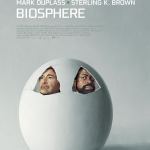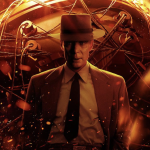With the recent news that Turner Classic Movies was in danger of being shut down – a fate that has been avoided, at least for now, due to a public outcry and the intervention of directors Paul Thomas Anderson, Martin Scorsese and Steven Spielberg – I was reminded of the tenuous nature of having access to classic movies from yesteryear is. The irony is that while streaming services are plentiful, with the exception of the Criterion Channel, none are devoted to films from Hollywood’s Golden Age or even recognize the existence of classic foreign cinema.
This underscores the importance of physical media. Licensing rights run out or are revoked, libraries are broken apart and access to productions that a viewer may have “purchased” and are stored in “THE CLOUD” -whatever that is – can disappear at the whim of the company that owns it. Only by owning a physical copy of a film are viewers guaranteed unlimited and immediate access to a movie. The production of Blu-Ray and DVDs by the major studios has dwindled and as a result, the number of productions from the 20th century are rarely included in their meager output.
This is why what the Criterion Collection is doing is so vital. For nearly 40 years, the company has proved themselves to be invaluable stewards in preserving important films from the past so that future generations may enjoy them. What with the constant fracturing of delivery systems through which films are distributed, their work has never been more important than it is right, each monthly announcement of the titles to be included in their collection a highly anticipated event for cinephiles everywhere.
And while each slate of to-be-included films contains one cinematic gem after another, of their most recent batch, the one that stood out was their handsome boxed set The Ranown Westerns, a collection of five movies directed by Budd Boetticher and starring Randolph Scott. Along with the westerns made by Anthony Mann and James Stewart, these films were groundbreaking in the way they revolutionized the genre by providing more modern psychological shadings to their heroes and villains. The notion of white hats and black hats being the distinguishing factors between friend and foe goes out the window, as the hero in question is often dogged by some tragic event from his past, riddled by a sense of guilt or obsession that leaves him vulnerable and flawed. As for the bad guys, often the reason for their behavior is justified or, at the very least, understandable as they are given a sense of humanity that makes them relatable, even if you didn’t agree with their actions.
Each briskly told – none run past the 80-minute mark – these gorgeously shot films make good use of their locations. The wide, beautiful vistas used by John Ford and Howard Hawks are absent here, Boetticher employing the rugged, hilly northern California environment that requires his characters to navigate a more rugged, difficult terrain, an effective metaphor for the psychological minefield they were contending with.
Based on the novel by Elmore Leonard, The Tall T (1957) finds Scott as a rancher taken hostage by stagecoach bandits. Richard Boone is memorable as his worthy adversary whose motives have an undeniable logic. Decision at Sundown (1957) takes a darker turn with Scott as a widower on the vengeance trail seeking the man, he thinks caused his wife’s death. That you begin to question his approach and objective is the point. Buchanan Rides Alone (1958) has Scott in the titular role as a man who rides into town and right smack dab in the middle of a feud between two brothers. Plot twists, double crosses and a bitterly ironic ending make this as much as a film noir as an oater. Ride Lonesome (1959) stars Scott as a bounty hunter who finds himself in competition with two outlaws -Lee Van Cleef and James Coburn in his film debut – who have very different reasons for hunting the prey they all seek. The first of these films shot in CinemaScope, Boetticher makes good use of the extra space to underscore the characters’ sense of physical and emotional isolation. Finally, Comanche Station (1960) sees Scott once more as a bounty hunter who rescues a woman who’s been kidnapped by Comanches. Not only does he have to contend with them but three others intent on undercutting his payday.
As with every Criterion issue, the supplements are an embarrassment of riches. The 4K restorations of the films ensure that they pop on the screen, the detail of the locations and the nuances of the performers captured with a clarity you’ll not find anywhere else. Introductions to each movie are provided by directors Martin Scorsese and Taylor Hackford, who also supplies a commentary track for Comanche Station. Jeanine Basinger and Jeremy Arnold serve in the same capacity for The Tall T and Ride Lonesome, respectively. Interviews with Boetticher are included as is a documentary on Scott by critic Farren Smith Nehme. A handsome booklet with essays by critics Tom Gunning and Glenn Kenny round out this impressive package.
More than anything, Criterion’s The Ranown Westerns offers viewers the chance to discover these films for the first time or to revisit them and take a deeper dive into these works. Upon closer examination, these movies are far more complex than they first appear, this package providing the consumer the opportunity to examine them again and again so that they can discover all they have to offer.




